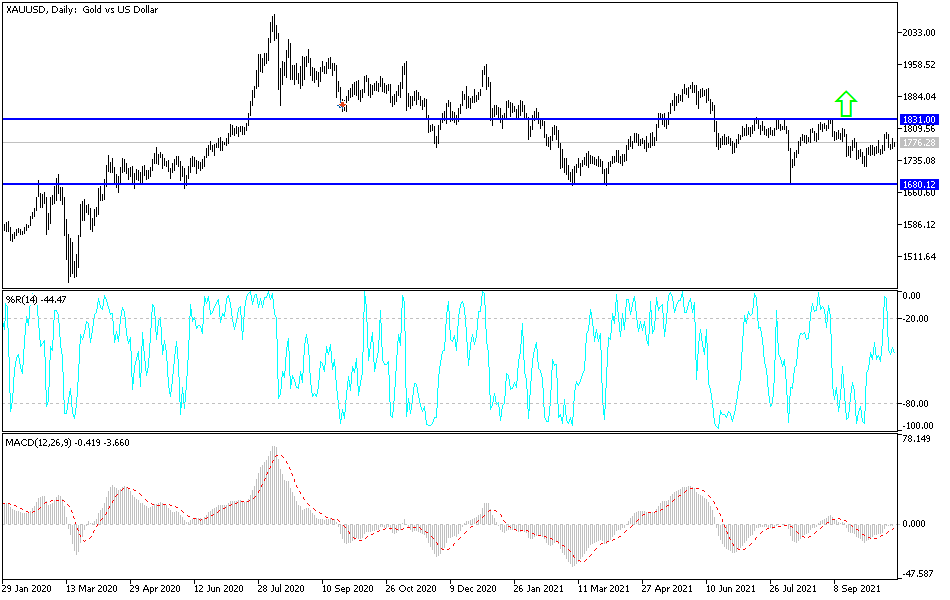The bulls succeeded in pushing the price of gold towards the $1785 resistance yesterday, then retreating towards the $1767 support at the beginning of trading today before settling around $1776 as of this writing. The pace of gold's gains stopped amid investors' appetite for risk, but I still see that there are many factors that may support gold's move and break through the psychological resistance of $1800 again. This in turn may increase buying. I still prefer buying gold from every bearish level. The closest targets for the correction are the support levels at $1763, $1755 and $1740. The price of gold is heading to a neutral environment with a bullish bias, and it is waiting for catalysts to launch higher.
The US dollar fell after the release of disappointing US industrial production data that eased concerns about inflation and tightening monetary policy. Impacted by the weak data, bond yields fell and the US Dollar Index fell to a three-week low.
Silver futures closed at $23.883 an ounce, while copper futures settled at $4.7030 a pound.
After China's disappointing GDP, the US reported a big loss. US industrial production, which the median forecast in a Bloomberg poll predicted a gain of 0.1%, fell instead -1.3%, its biggest drop since February. To make matters worse, the 0.4% gain recorded in August was revised to -0.1%. The weakness was particularly evident in manufacturing, where supply chain issues remain disrupted. Manufacturing fell 0.7% in September, and the August series was revised to a 0.4% loss from a 0.2% gain. Both the Manufacturing PMI and ISM advanced in September.
Next week, the US will release its first estimate of third-quarter GDP. Expectations were lowered. The current average in a Bloomberg survey sees 3% growth. The Atlanta Federal Reserve's GDP tracker puts it at 1.2% as of October 15.
This morning, inflation was reported to have eased in Britain as lower prices for dining out offset some of the rise in transport costs. Accordingly, the Office for National Statistics said on Wednesday that consumer prices in Britain rose 3.1% last month, slower than economists' expectations of 3.2%. The reading left inflation well above the Bank of England's 2% target for the second month.
Financial markets expect the British central bank to raise interest rates next month to contain the price escalation. Bank of England officials expect headline inflation to jump above 4% this year - more than double their 2% target. The cost of transportation drove gains in inflation in September, with a massive jump in gasoline prices even before the fuel crisis slashed supplies. The prices of used cars have also risen sharply.
These factors were offset by a sharp drop in hotel and restaurant prices, which fell in September compared to last year.

